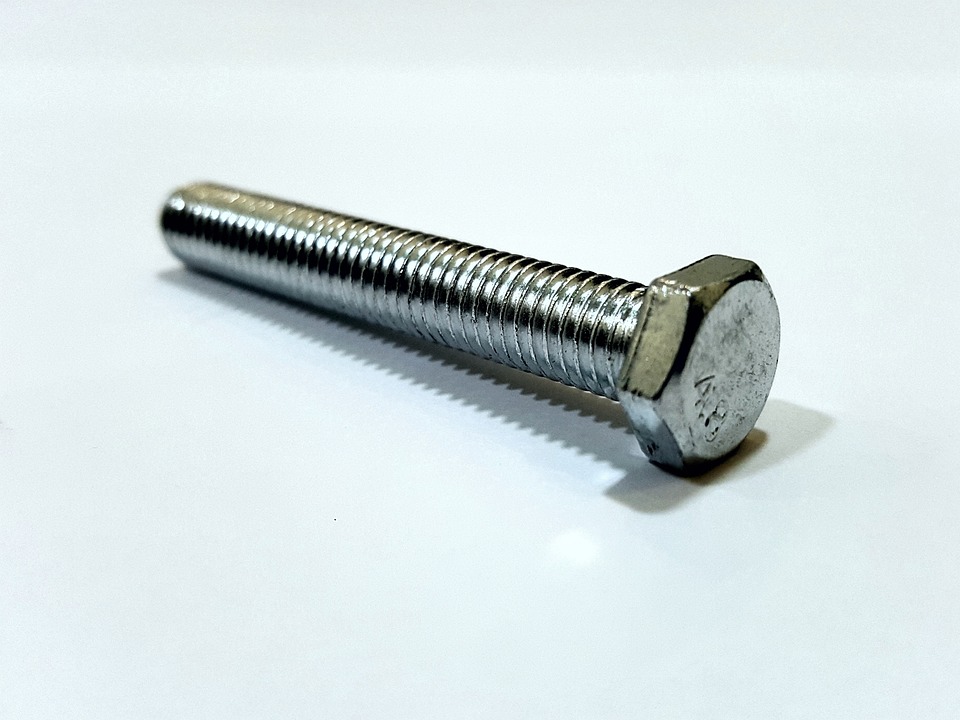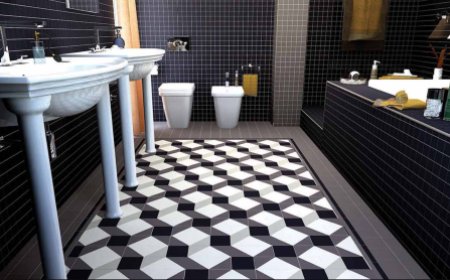How to Plan a New Orleans Music Festival Trip
How to Plan a New Orleans Music Festival Trip New Orleans is more than a city—it’s a living symphony of rhythm, culture, and soul. From the brass bands echoing through Frenchmen Street to the jazz-infused melodies drifting from Jackson Square, the city’s musical heartbeat is unmatched. Planning a trip to one of its iconic music festivals—whether it’s the world-renowned New Orleans Jazz & Heritage
How to Plan a New Orleans Music Festival Trip
New Orleans is more than a city—it’s a living symphony of rhythm, culture, and soul. From the brass bands echoing through Frenchmen Street to the jazz-infused melodies drifting from Jackson Square, the city’s musical heartbeat is unmatched. Planning a trip to one of its iconic music festivals—whether it’s the world-renowned New Orleans Jazz & Heritage Festival, the vibrant Voodoo Music + Arts Experience, or the intimate Satchmo SummerFest—is not just about attending concerts. It’s about immersing yourself in a centuries-old tradition where music is woven into the fabric of daily life. A well-planned New Orleans music festival trip transforms a vacation into a profound cultural experience, blending authentic local flavors, historic neighborhoods, and unforgettable performances. This guide walks you through every critical step to ensure your journey is seamless, enriching, and deeply memorable.
Step-by-Step Guide
1. Choose Your Festival and Dates
The first and most crucial decision is selecting which festival aligns with your musical tastes and travel schedule. New Orleans hosts over 130 music festivals annually, but a handful dominate the calendar and draw international crowds.
The New Orleans Jazz & Heritage Festival (commonly called Jazz Fest) takes place over two consecutive weekends in late April and early May. It features a diverse lineup spanning jazz, blues, R&B, gospel, Cajun, zydeco, rock, and international acts, all set across multiple stages in the Fair Grounds Race Course. If you’re drawn to genre diversity and legendary performers, this is your festival.
Voodoo Music + Arts Experience occurs in late October, typically around Halloween, in City Park. It leans heavily into alternative rock, electronic, hip-hop, and indie acts, with immersive art installations and a festive, slightly eerie atmosphere. It’s ideal for younger crowds and those seeking a more modern, visually driven experience.
Satchmo SummerFest, held in early August, celebrates Louis Armstrong’s legacy with intimate performances, educational panels, and authentic Creole cuisine. It’s perfect for jazz purists and history buffs.
Other notable events include the French Quarter Festival (free, April), the New Orleans Wine & Food Experience (May), and the Essence Festival (July), which centers on Black culture and contemporary R&B. Research each festival’s official website for exact dates, as they shift slightly year to year. Once selected, lock in your travel dates immediately—flights and accommodations fill up months in advance.
2. Book Accommodations Early
Accommodations in New Orleans during festival season are scarce and expensive. Waiting until the last minute can result in inflated prices or being forced to stay miles from the action. Start your search at least six to eight months ahead.
Consider your priorities: proximity to the festival, ambiance, and budget. Staying in the French Quarter offers walkability to bars, restaurants, and street performers, but it’s noisy and pricey. The Marigny and Bywater neighborhoods provide a more local, artsy vibe with boutique hotels and vacation rentals at slightly lower rates. For families or those seeking space, Uptown and Algiers offer quieter stays with easy access via streetcar or ride-share.
Book through multiple platforms—including Airbnb, Booking.com, and direct hotel websites—to compare prices and cancellation policies. Look for properties with kitchenettes if you plan to prep simple meals to save on dining costs. Avoid rentals without verified reviews or those that list “festival proximity” without actual walking distances.
3. Purchase Festival Tickets Strategically
Festival tickets are often sold in tiers: single-day passes, multi-day passes, and VIP packages. For Jazz Fest, general admission is $70–$85 per day, while VIP ($350–$500) includes premium viewing areas, private restrooms, and complimentary food and drinks. Evaluate whether VIP is worth it based on your tolerance for crowds and desire for comfort.
Always buy tickets through the official festival website. Third-party resellers often charge exorbitant markups or sell counterfeit tickets. Sign up for email alerts on the festival’s site to be notified when tickets go on sale. Many festivals offer presales for newsletter subscribers or credit card holders.
Consider purchasing a multi-day pass if you plan to attend more than one day. It usually offers a discount and eliminates the need to queue daily. For Voodoo, a three-day pass is the most cost-effective option. If you’re unsure about your schedule, buy single-day tickets and monitor resale platforms like Ticketmaster’s Verified Resale or StubHub for last-minute deals—only if the seller is verified.
4. Plan Your Transportation
New Orleans is a walkable city, but festival venues are often outside the core tourist zones. Jazz Fest is located at the Fair Grounds, 3 miles from the French Quarter. Voodoo is in City Park, roughly 2 miles from the Quarter. Relying solely on walking is impractical, especially in heat and humidity.
Use the RTA Streetcar system. The St. Charles line runs from the French Quarter to Uptown and connects to nearby areas. The Canal Street line links the Quarter to the riverfront and can be combined with ride-shares. A one-way fare is $1.25; consider a 1-day pass ($3) or 3-day pass ($9) if you’ll be riding frequently.
For direct access to festival grounds, use ride-share apps like Uber or Lyft. They’re reliable but surge pricing is common during peak hours. Budget an extra $15–$30 per ride during festival times. Alternatively, consider renting a bike through the city’s Bike NOLA program—many streets have protected bike lanes, and it’s an eco-friendly way to explore.
If you’re staying outside the city, consider parking at a central location (like a hotel in Uptown) and using public transit. Avoid parking near the festival grounds—spaces are limited, and towing is aggressive during events.
5. Create a Daily Itinerary (But Stay Flexible)
While spontaneity is part of New Orleans’ charm, having a loose daily plan prevents overwhelm. Festival lineups are massive—Jazz Fest often features 50+ acts per day across 10+ stages. Use the festival’s official app or website to map out must-see performers.
Block out time for: breakfast at a local café (try Café du Monde for beignets or Commander’s Palace for a hearty Southern brunch), a midday stage hop, lunch at a neighborhood eatery (gumbo at Dooky Chase’s, po’boys at Parkway Bakery), and evening exploration. Don’t forget to schedule downtime. The heat and noise can be draining.
Use the “stage hopping” strategy: alternate between larger headline acts and smaller, hidden gems. For example, after watching a headliner on the Jazz Stage, head to the Gospel Tent or the Blues Tent for soul-stirring, less crowded performances. Many local artists perform multiple times across different venues—check the schedule for repeat appearances.
Also plan for non-festival activities. Visit the National WWII Museum, stroll through the Garden District, take a swamp tour, or explore the historic cemeteries. These experiences round out your trip and provide contrast to the festival’s intensity.
6. Pack Smart for the Climate and Culture
New Orleans is humid, hot, and often rainy—even in spring and fall. Pack light, breathable clothing: cotton shirts, linen pants, sundresses, and wide-brimmed hats. Bring a compact umbrella or a light rain jacket. Comfortable walking shoes are non-negotiable—expect to cover 8–12 miles per day on uneven cobblestones and pavement.
Bring a reusable water bottle. Hydration is critical. Many festivals have free water refill stations, but carry a small backpack to hold essentials: sunscreen (reef-safe, if you plan to visit nearby wetlands), insect repellent, a portable phone charger, and a small towel.
Dress for the culture. New Orleanians take pride in their style. While casual attire is acceptable, many locals dress up for festivals—think colorful prints, vintage hats, and statement jewelry. Embrace the spirit; you don’t need to overdress, but avoid flip-flops and athletic wear unless you’re at the gym.
Bring cash. While credit cards are widely accepted, many street vendors, food stalls, and small shops operate on cash-only. ATMs are available, but fees can be high. Carry $100–$200 in small bills for tips, souvenirs, and impromptu gumbo bowls.
7. Master the Local Cuisine
Food is as essential to a New Orleans festival trip as the music. The city’s culinary scene is world-class and deeply intertwined with its musical heritage. Don’t just eat—experience.
At Jazz Fest, the Food Fair is legendary. Try jambalaya from Dooky Chase’s, crawfish bread from Cochon Butcher, and pralines from the Praline Connection. Sample beignets, muffulettas, and alligator sausage. Each vendor represents a different corner of Louisiana’s culinary map.
For authentic, off-the-beaten-path eats, explore local spots like Willie Mae’s Scotch House (famous for fried chicken), Coop’s Place (for classic po’boys), or Gumbo Shop (for rich, slow-simmered gumbo). Many restaurants require reservations—book ahead, especially on weekends.
Don’t miss the local drinks. Sip a Sazerac at the Roosevelt Hotel’s bar, try a Hurricane at Pat O’Brien’s, or sample a locally brewed craft beer at NOLA Brewing Company. Many festivals have dedicated beverage tents with local brews and cocktails—sample responsibly.
Be mindful of dietary needs. Many dishes contain shellfish, dairy, or gluten. Don’t hesitate to ask vendors about ingredients. Vegan and vegetarian options are increasingly available—look for booths labeled “Plant-Based” or ask staff for recommendations.
8. Respect the Culture and Community
New Orleans is not a theme park. Its music, food, and traditions are rooted in generations of African, Caribbean, French, and Spanish heritage. Approach the city with humility and curiosity.
Never record entire performances without permission—many local musicians rely on tips and live sales. If you want to record, ask politely. Share your videos on social media with proper credit to the artists.
Support local businesses. Buy music from artists directly at their booths, not from mass retailers. Purchase handmade crafts from local artisans, not imported souvenirs. Tip street musicians—$5–$10 is customary.
Be respectful in residential neighborhoods. Keep noise levels down after 10 p.m., avoid blocking sidewalks, and never enter private property. Many homes in the French Quarter and Marigny are occupied year-round—locals appreciate visitors who treat their homes with care.
Learn a few Creole phrases. “Laissez les bons temps rouler” (let the good times roll), “Merci” (thank you), and “Comment ça va?” (how are you?) go a long way in building goodwill.
Best Practices
Start Planning Early—Six to Eight Months Ahead
Procrastination is the enemy of a great New Orleans festival trip. Flights, hotels, and festival tickets are all subject to rapid price increases and sellouts. The earlier you lock in your plans, the more control you have over budget, location, and schedule. Set calendar reminders for ticket release dates and book as soon as possible.
Use a Festival App and Digital Calendar
Most major festivals offer official apps with real-time schedules, maps, artist bios, and push notifications for stage changes. Download them before you arrive. Sync your personal calendar with the festival lineup to receive alerts for your must-see acts. Avoid paper schedules—they’re outdated quickly.
Stay Hydrated and Take Breaks
The combination of heat, humidity, alcohol, and dancing can lead to exhaustion or heatstroke. Drink water every hour, even if you’re not thirsty. Take 15–20 minute breaks in shaded areas or air-conditioned tents. Use your hotel room as a rest hub between festival days.
Travel Light, But Bring Essentials
Carry only what you need: phone, wallet, tickets, ID, water bottle, sunscreen, and a small fan or hand towel. Leave bulky bags, professional cameras, and unnecessary electronics at your accommodation. Many festivals have bag checks, and long lines waste valuable time.
Engage With Locals
Don’t just observe—interact. Ask musicians about their influences. Chat with food vendors about their recipes. Strike up conversations with fellow attendees. New Orleanians are proud of their culture and love sharing it. These interactions often lead to the most memorable moments of your trip.
Be Prepared for Weather Changes
Afternoon thunderstorms are common. Have a backup plan for indoor activities. Visit museums, jazz clubs like Preservation Hall, or the Historic New Orleans Collection. Many clubs offer live music nightly—even when festivals aren’t in session.
Don’t Try to Do Everything
It’s tempting to chase every headliner, but over-scheduling leads to burnout. Prioritize three to five acts per day. Leave room for wandering, spontaneous street performances, and quiet moments sipping coffee on a balcony. Some of the best music happens outside the official lineup—listen for horns drifting from a backyard party in the Marigny.
Support Local Artists Beyond the Festival
After the festival ends, continue your support. Follow local musicians on Instagram or Bandcamp. Buy their albums. Attend their club gigs. Many artists play weekly at venues like Snug Harbor, Tipitina’s, or The Spotted Cat. These intimate shows often cost less than $20 and offer unparalleled access.
Tools and Resources
Official Festival Websites
Always begin with the primary source:
- New Orleans Jazz & Heritage Festival: nojazzfest.com
- Voodoo Music + Arts Experience: voodoofestival.com
- Satchmo SummerFest: satchmosummerfest.org
- French Quarter Festival: fqf.org
These sites offer the most accurate schedules, artist announcements, parking info, and accessibility details.
Travel and Navigation Apps
Google Maps is indispensable for navigating streets, checking walking times, and finding nearby eateries. Download offline maps before arrival.
Waze provides real-time traffic alerts and alternative routes—essential during festival traffic surges.
RTA New Orleans app offers live streetcar tracking and route planning.
Yelp and TripAdvisor help filter restaurant reviews by dietary needs, price range, and proximity.
Music Discovery Platforms
Before your trip, explore local artists on:
- Bandcamp – Search “New Orleans jazz” or “zydeco” for independent releases.
- Spotify – Playlists like “New Orleans Jazz Essentials” or “Cajun & Zydeco” offer curated listening.
- YouTube – Search for “Jazz Fest 2023 highlights” or “Frenchmen Street live” to preview performances.
Accommodation Booking Platforms
Compare prices across:
- Airbnb – Best for unique stays and longer-term rentals.
- Booking.com – Filters for free cancellation and pet-friendly options.
- Hotels.com – Rewards program for repeat stays.
- Expedia – Bundles flights and hotels for savings.
Local Blogs and Guides
For insider tips, follow:
- NOLA.com – The Times-Picayune’s official site for event coverage.
- Where NOLA – Local lifestyle blog with festival guides and food reviews.
- The Infatuation New Orleans – Concise, witty dining recommendations.
- French Quarter Journal – Historical context and neighborhood insights.
Weather and Packing Tools
Check the NOAA National Weather Service for New Orleans forecasts. Use PackPoint (app) to generate a custom packing list based on weather, duration, and activities.
Real Examples
Example 1: The Jazz Fest First-Timer
Emma, a 28-year-old jazz enthusiast from Chicago, planned her first trip to Jazz Fest six months in advance. She booked a 1-bedroom apartment in the Marigny for $180/night and purchased a 2-day general admission pass for $150. She flew into MSY on a Thursday, arriving early to acclimate. Her daily plan included: breakfast at Café du Monde, exploring the Fair Grounds from 11 a.m. to 6 p.m., lunch at the Food Fair (gumbo and crawfish pie), and an evening of live music at Preservation Hall. She bought a handmade tambourine from a local artisan, recorded a short video of a second-line parade, and shared it with the hashtag
JazzFestNewOrleans. She returned home with 12 new favorite artists, a deeper appreciation for Creole culture, and a plan to return next year.
Example 2: The Family Festival Experience
The Rodriguez family—parents and two teens—attended Voodoo in October. They stayed in a 3-bedroom Uptown rental with a backyard, which allowed them to cook meals and relax between festival days. They bought a 3-day pass and used the RTA streetcar to reach City Park. Their teens loved the electronic acts, while the parents enjoyed the art installations and local food trucks. They visited the Garden District on a quiet afternoon and took a swamp tour with a local guide who shared stories of jazz musicians who once performed on riverboats. The kids bought handmade masks from local artists and learned to play the washboard at a free workshop. They left with a shared memory of music, culture, and connection.
Example 3: The Solo Traveler’s Deep Dive
Diego, a 35-year-old photographer from Spain, traveled alone to Satchmo SummerFest. He stayed in a historic B&B in the French Quarter and spent his days attending panel discussions on Armstrong’s legacy, photographing street musicians, and interviewing local historians. He bought a vintage trumpet from a collector and took a lesson from a local jazz teacher. He ate at local family-run restaurants every night, learning recipes from the owners. He ended his trip with a private performance at a small jazz club, where the owner invited him to play along. He returned home with a documentary-style photo series and a new understanding of how music preserves identity.
FAQs
What is the best time of year to visit New Orleans for music festivals?
The two peak seasons are late April to early May (Jazz Fest) and late October (Voodoo). Spring offers mild weather and the most diverse lineup, while fall brings cooler temperatures and a more alternative vibe. Avoid summer months (June–August) unless you’re attending Satchmo SummerFest—heat and humidity are extreme.
Are music festivals in New Orleans family-friendly?
Yes, many are. Jazz Fest and French Quarter Festival have dedicated children’s areas, arts and crafts workshops, and kid-friendly performances. Voodoo is more geared toward adults due to its late-night hours and alcohol focus. Always check the festival’s website for family policies and age restrictions.
Can I bring my own food and drinks to the festival?
Most festivals prohibit outside food and beverages, especially alcohol. Water bottles are usually allowed if empty, and refill stations are available. Check the specific festival’s policy before packing.
Is it safe to walk around New Orleans during the festival?
Generally, yes. The French Quarter, Marigny, and festival grounds are heavily patrolled and tourist-friendly. Avoid poorly lit or isolated areas after midnight. Use ride-shares for late-night travel. Trust your instincts—New Orleans is vibrant but, like any major city, requires situational awareness.
How much money should I budget for a 4-day festival trip?
A reasonable budget is $1,200–$2,500 per person, depending on accommodations and spending habits. This includes: flights ($400–$800), lodging ($300–$800), festival tickets ($150–$500), food ($150–$300), transportation ($50–$150), and souvenirs ($100–$200).
Do I need to speak French to enjoy the festival?
No. English is universally spoken. However, you’ll hear French and Creole phrases in music, signage, and conversation. Learning a few basic phrases enhances your experience and shows respect for the culture.
What should I do if I miss a performance?
Many artists perform multiple times across different venues. Check the schedule for repeat appearances. Also, explore street performances and local clubs—some of the best music happens outside the official lineup.
Can I buy music and merchandise at the festival?
Yes. Most artists sell CDs, vinyl, T-shirts, and handmade items at their booths. Purchasing directly supports them and gives you a lasting memento of the experience.
Conclusion
Planning a New Orleans music festival trip is not just logistical—it’s a pilgrimage into the soul of American music. Every note played, every dish served, every street corner where a brass band gathers, tells a story of resilience, joy, and cultural fusion. By following this guide—from early booking and smart packing to respectful engagement and deep listening—you don’t just attend a festival; you become part of its living legacy.
The magic of New Orleans lies not in the headliners alone, but in the moments between: the shared laughter over a po’boy, the spontaneous dance in the street, the quiet awe as a trumpet solo echoes into the humid night. Let this trip be more than a vacation. Let it be a transformation.
When you return home, don’t let the music fade. Keep listening. Keep learning. Keep sharing. And one day, you’ll find yourself back on Bourbon Street, tambourine in hand, ready to roll with the good times once more.




















